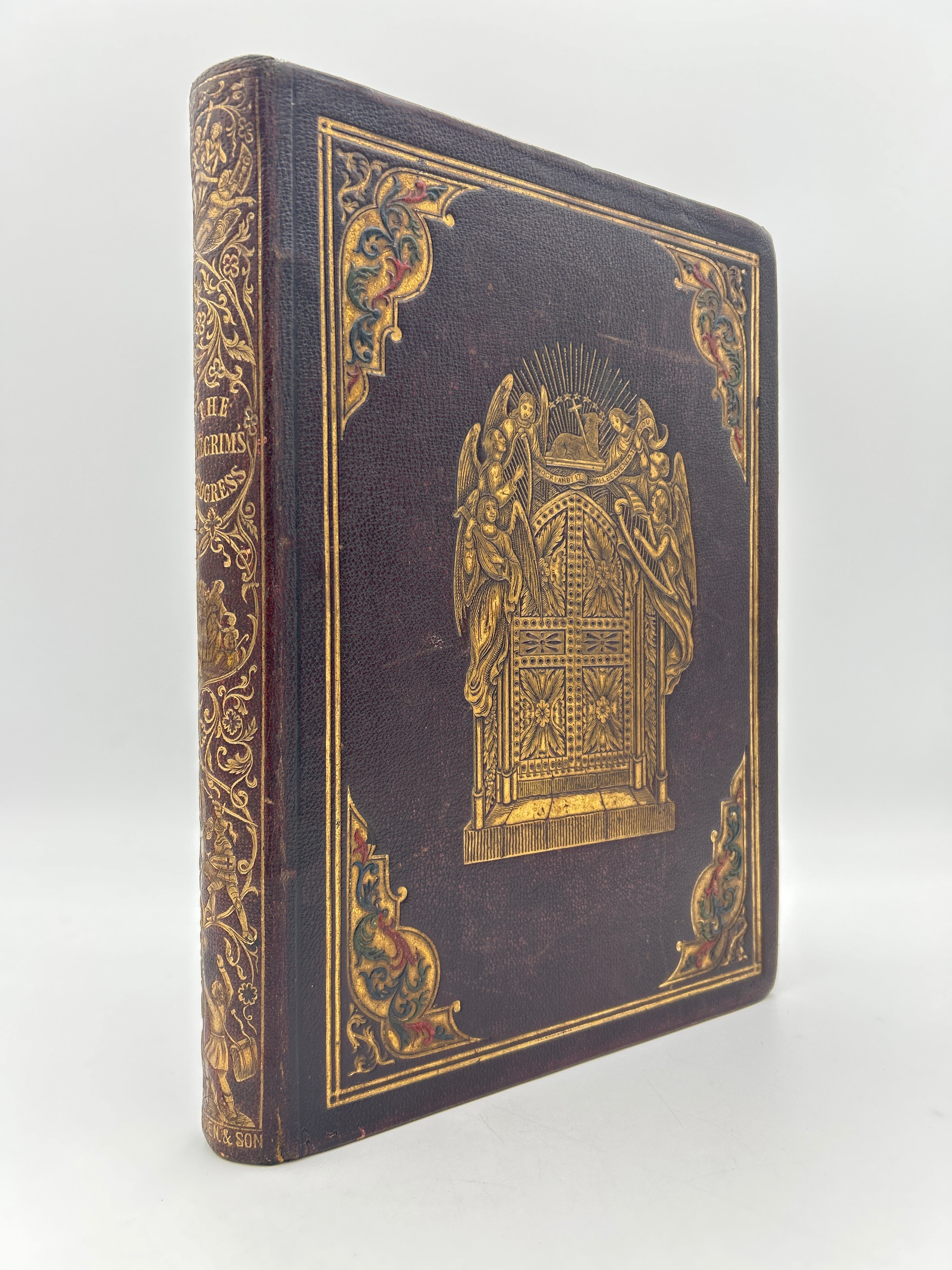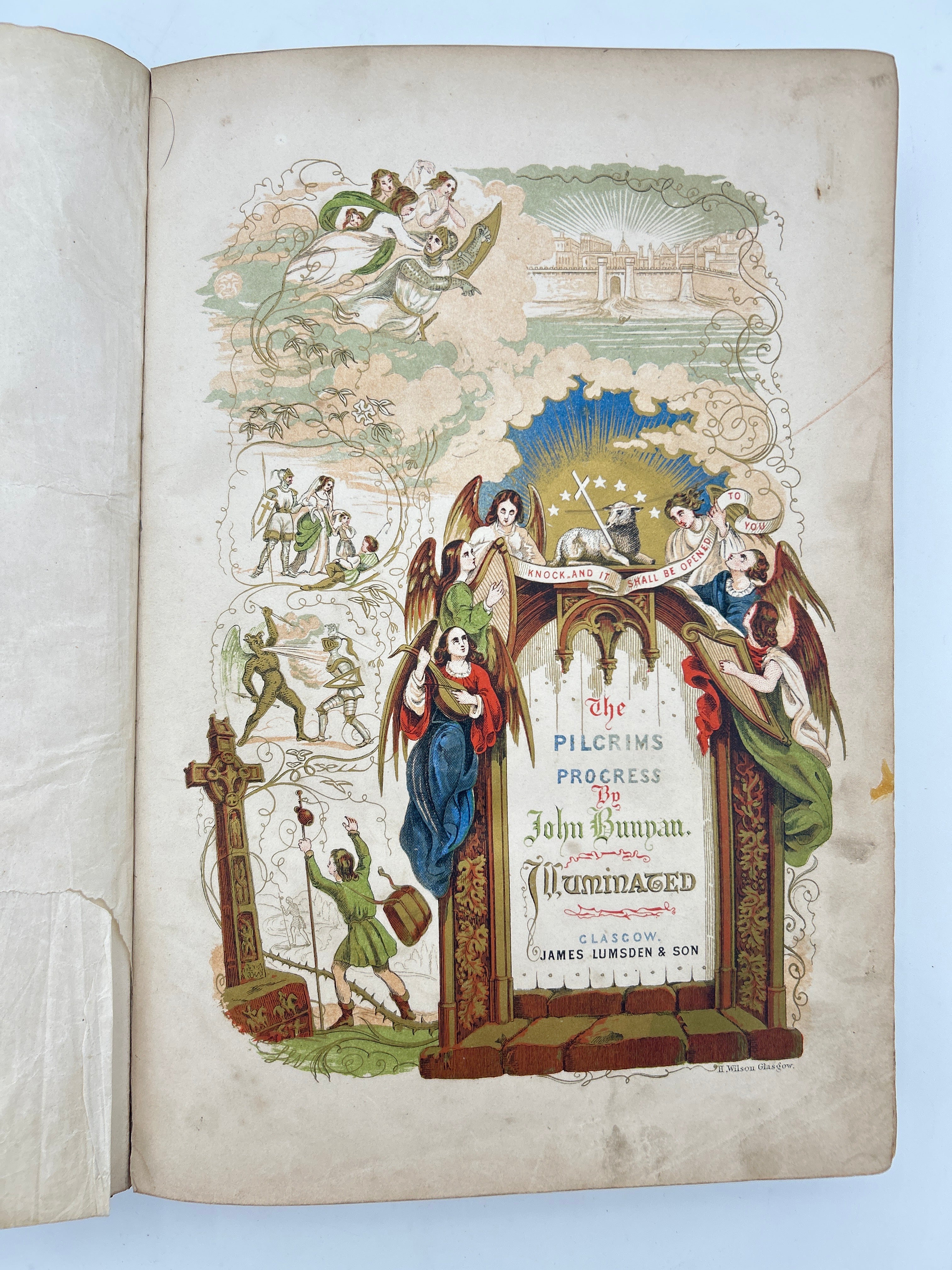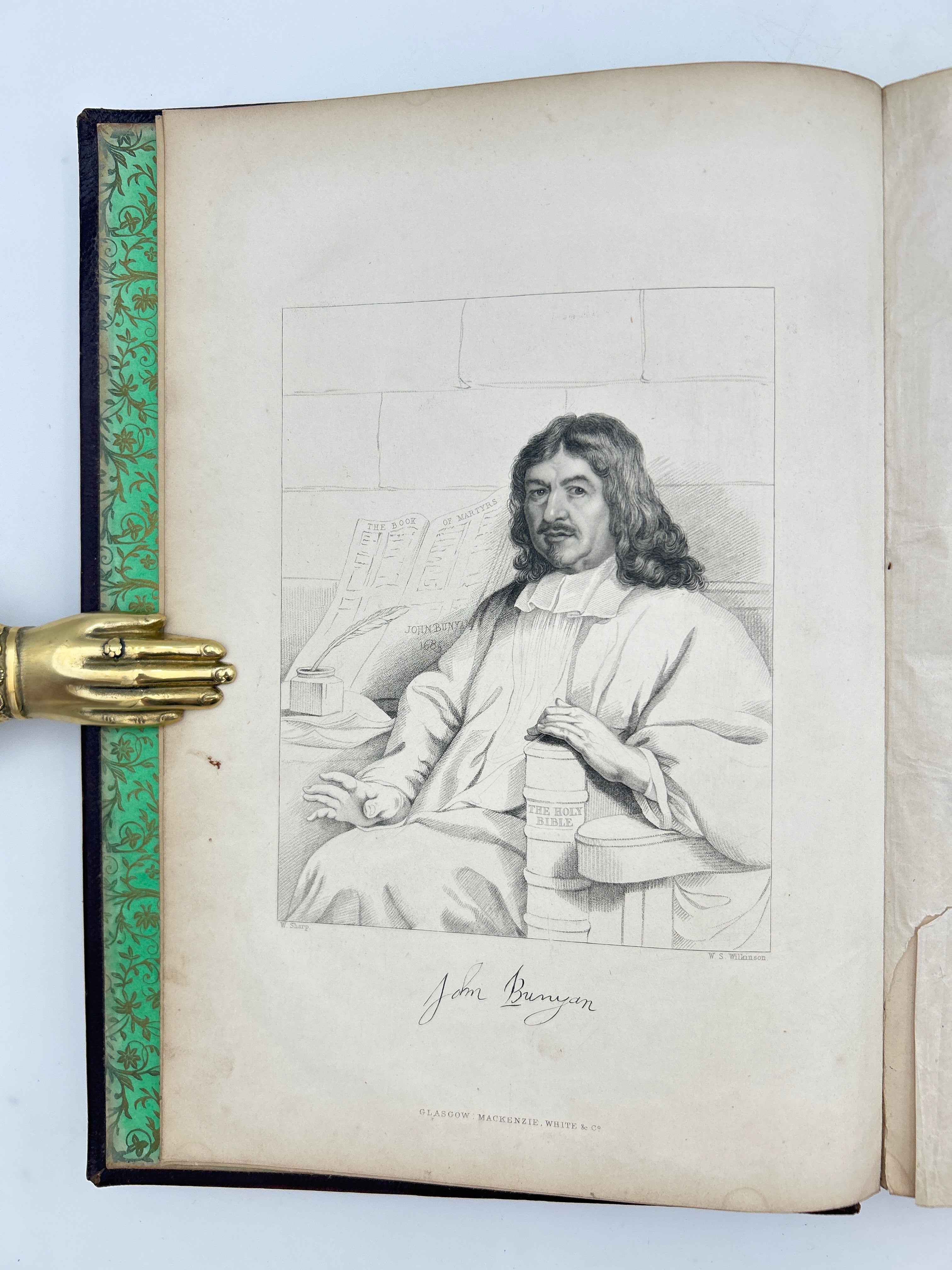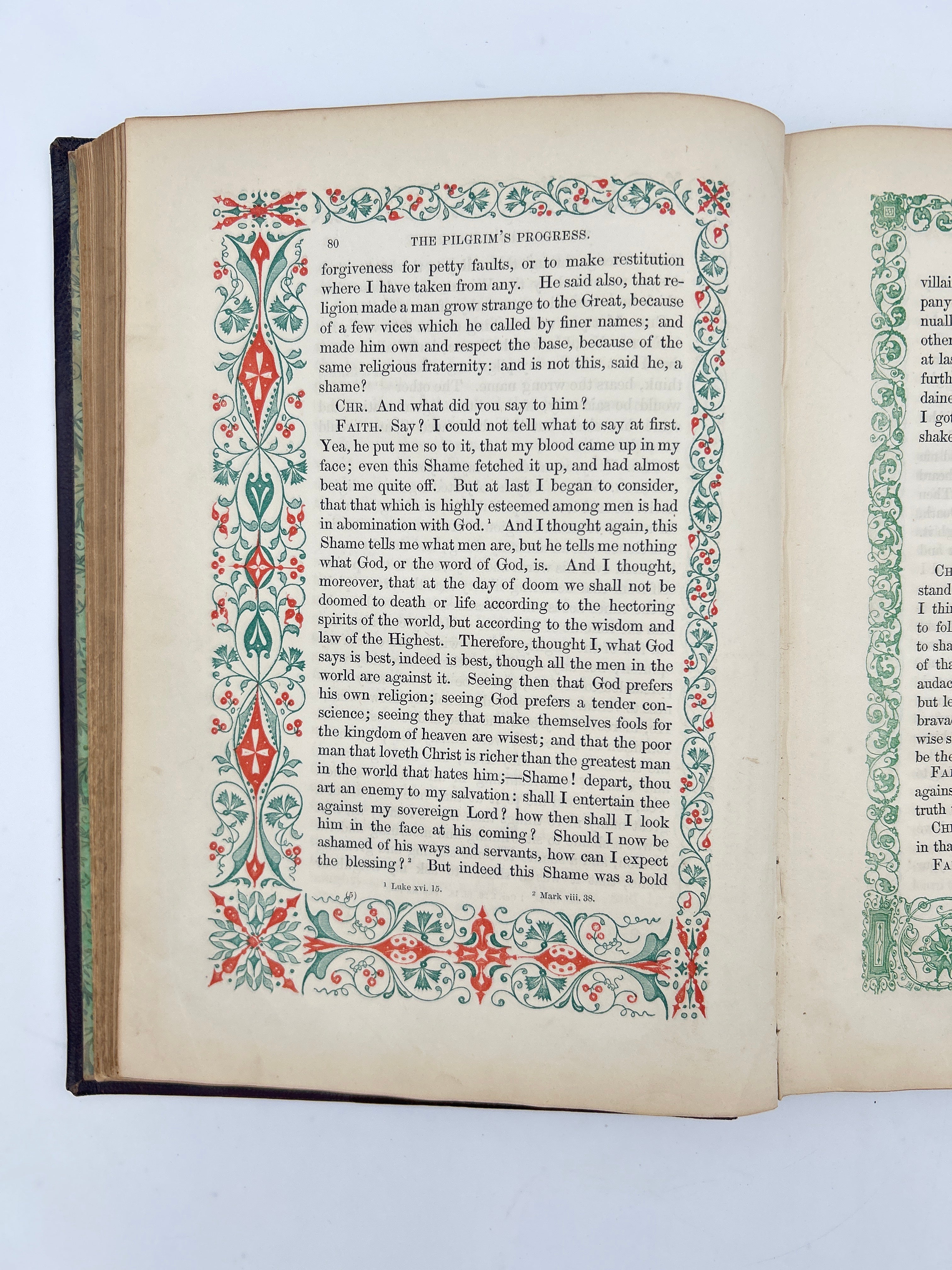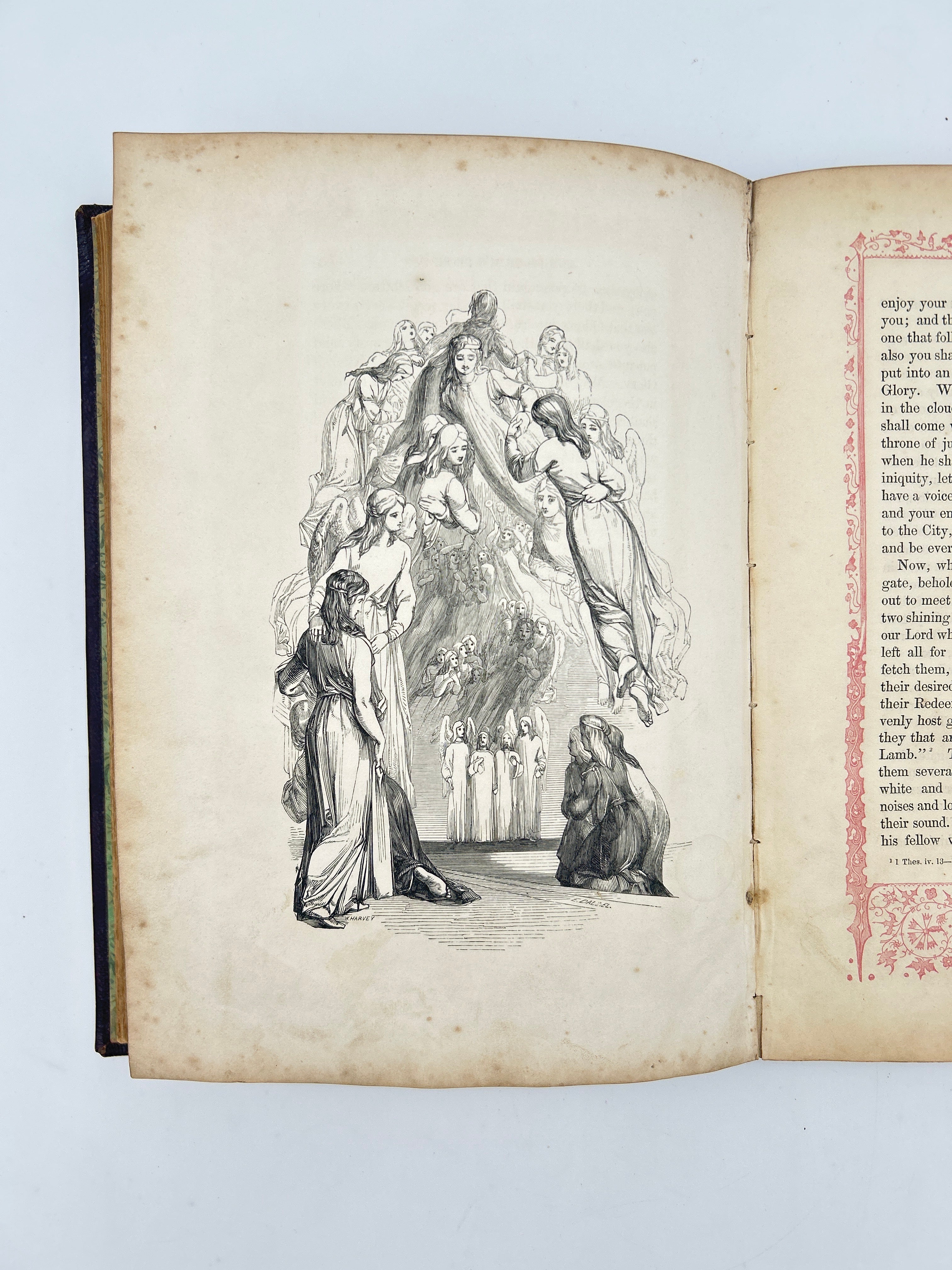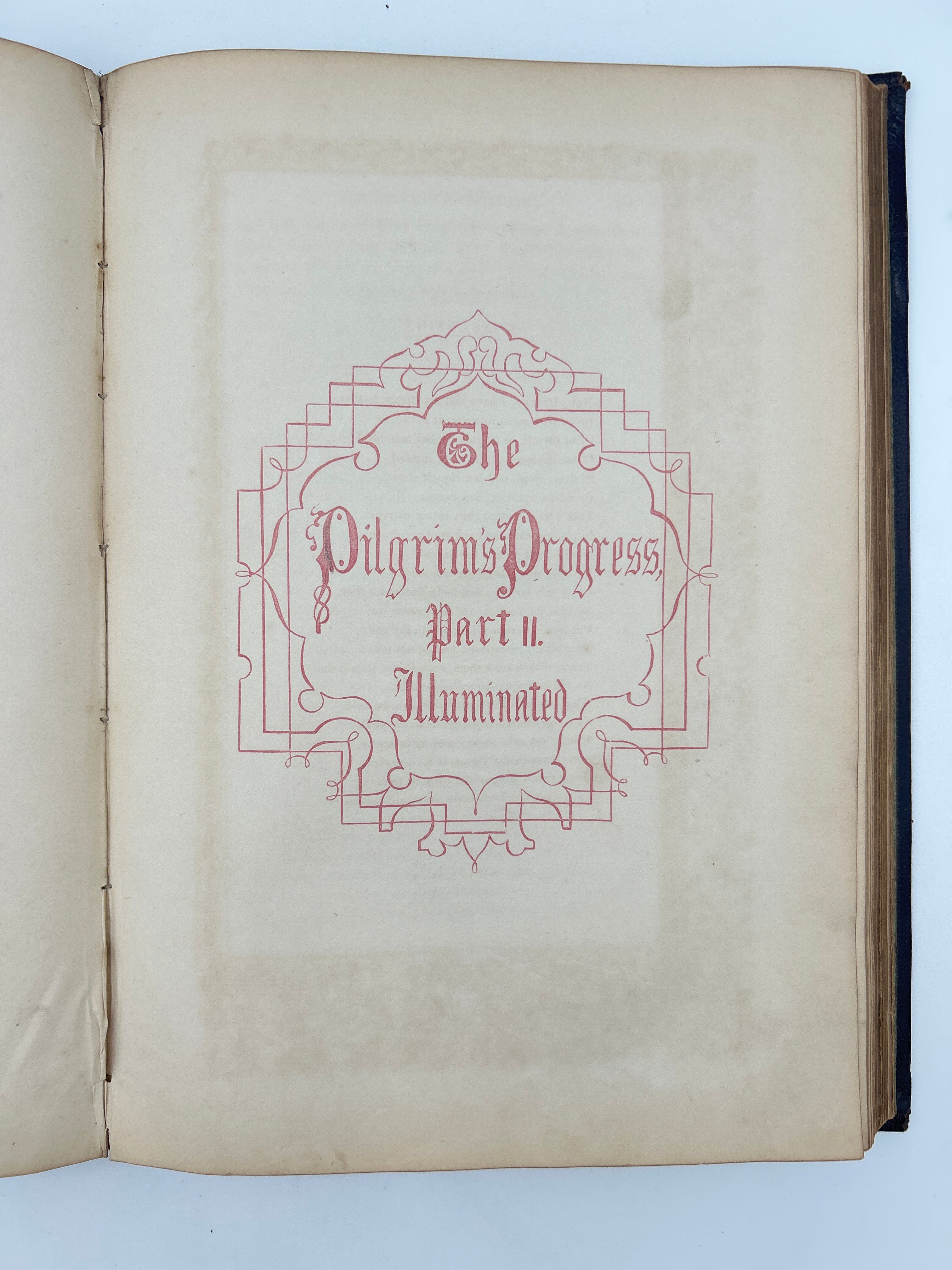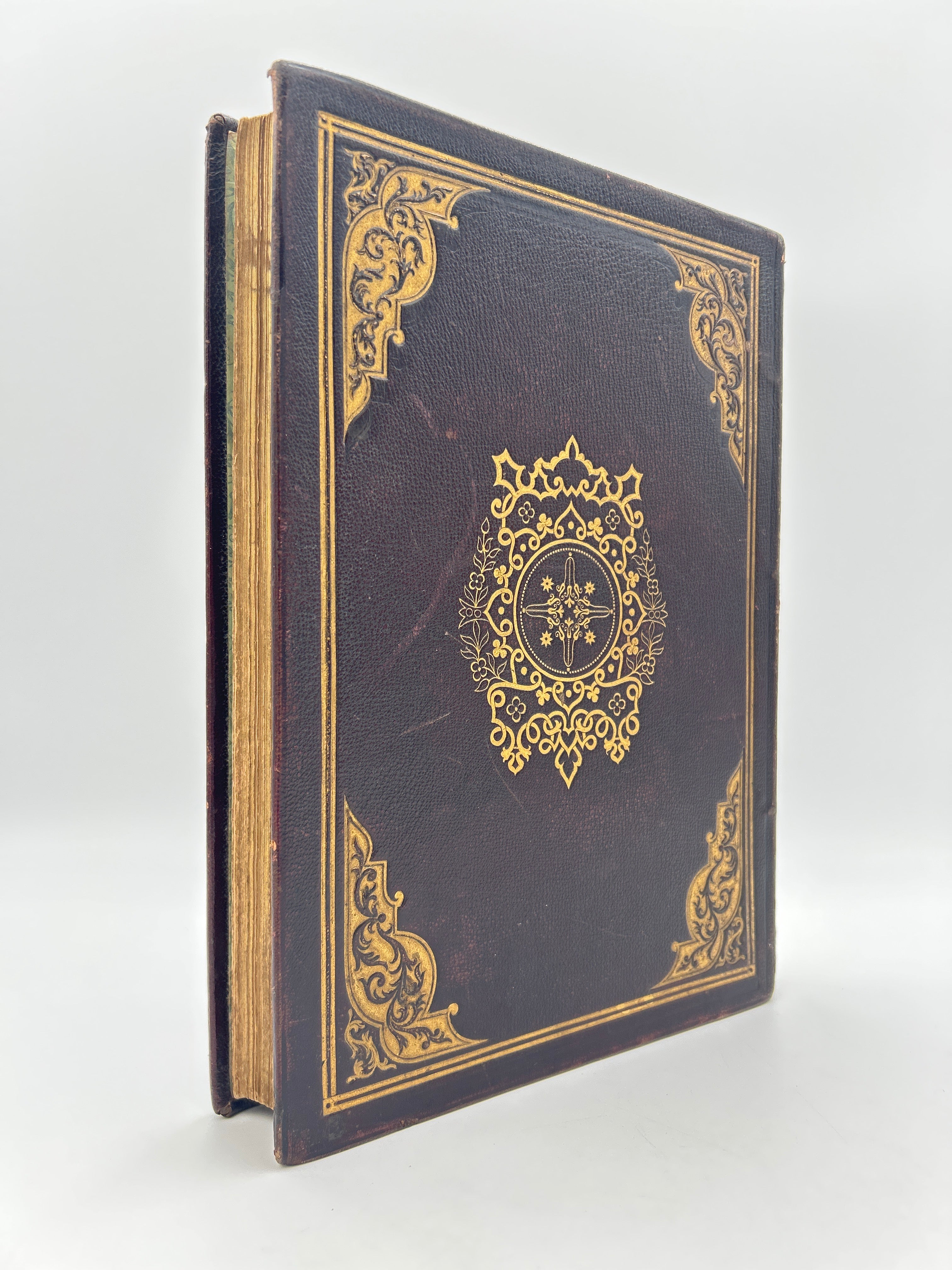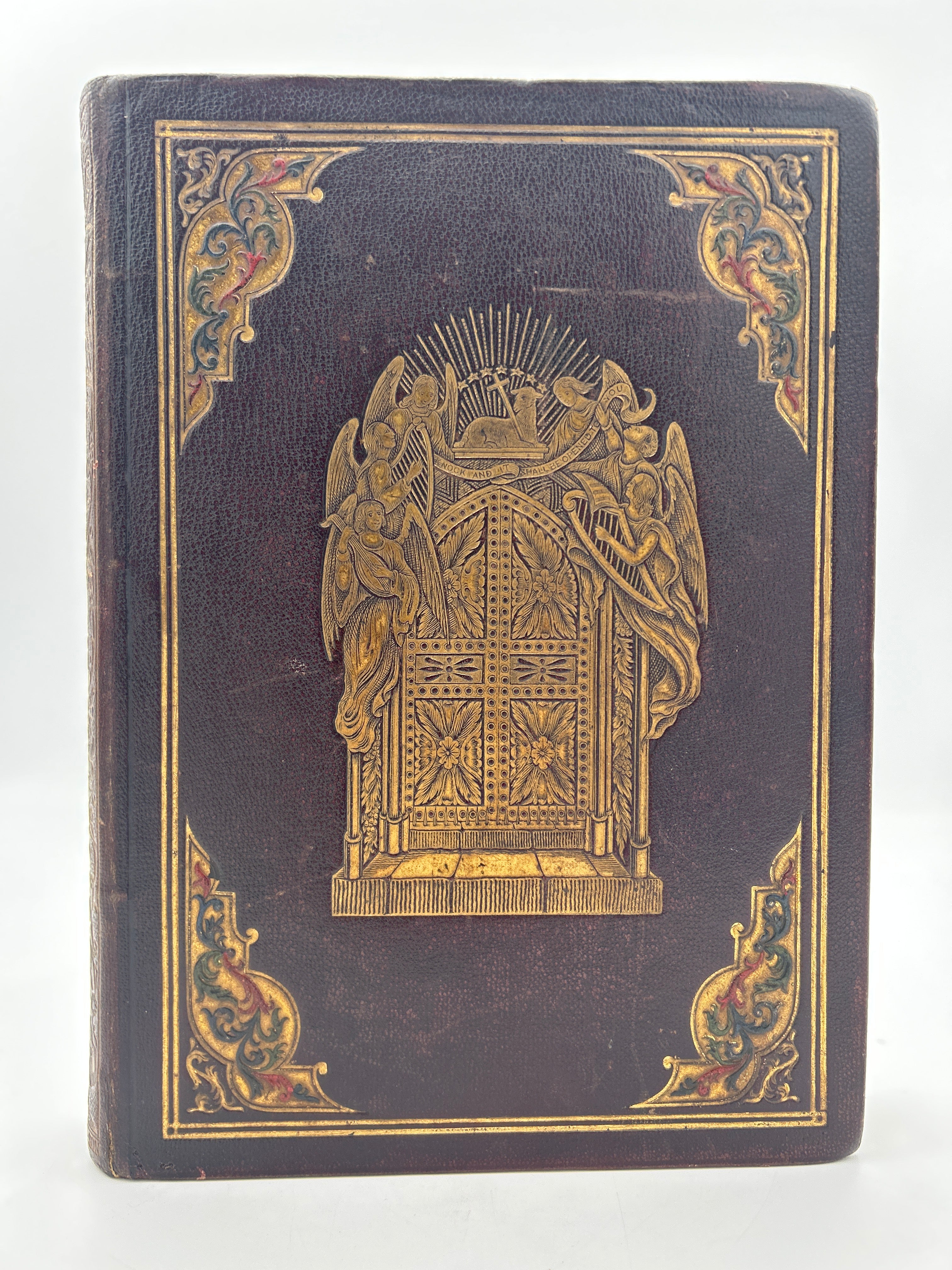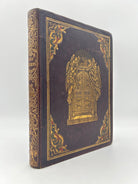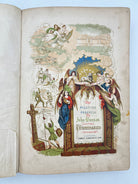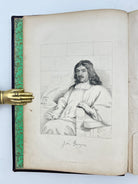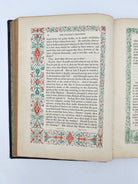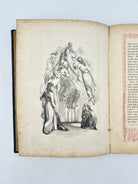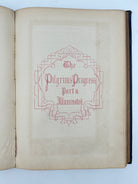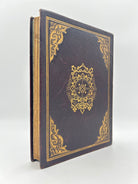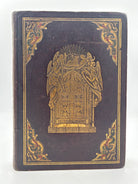The Pilgrims Progress
Couldn't load pickup availability
5b John Bunyan. Illuminated edition. Glasgow: James Lumsden & Son, 1850
Notes
The Pilgrim’s Progress, first published in 1678, is one of the most influential works of Christian literature in the English language. Written by John Bunyan while he was imprisoned for preaching without a license, the book is an allegory that follows a character named Christian as he journeys from the City of Destruction to the Celestial City. Along the way, he faces spiritual trials, temptations, and encounters symbolic figures like Evangelist, Faithful, and Hopeful, all representing aspects of the Christian life. The story’s power lies in its simplicity and depth—it speaks to the inner struggles of faith, repentance, perseverance, and salvation in a form that is both accessible and profound.
The book was immediately popular and has never been out of print. Its imaginative narrative, grounded in Scripture, appealed to readers across social and educational backgrounds. Later editions often included illustrations and marginal Scripture references, helping readers follow its spiritual themes. A second part, published in 1684, tells the story of Christian’s wife, Christiana, and her journey to the Celestial City, expanding the work’s reach and emotional range. Over centuries, The Pilgrim’s Progress has been translated into more than 200 languages and remains a spiritual classic, shaping Christian thought, literature, and devotional practice around the world.
John Bunyan (1628–1688) was an English preacher, writer, and former tinker (metalworker) whose humble background shaped his plainspoken yet powerful prose. A committed Puritan and Nonconformist, he was imprisoned for 12 years for preaching outside the established Church of England. It was during this imprisonment in Bedford Jail that he wrote The Pilgrim’s Progress, drawing deeply from his own struggles, religious convictions, and intimate knowledge of Scripture. Despite limited formal education, Bunyan became one of the most widely read authors of his time. His legacy endures not only through The Pilgrim’s Progress, but also through his other works on Christian living and spiritual warfare, all marked by vivid imagery, theological depth, and a deep concern for the soul.
Description
Maroon cloth illustrated and decorated in gilt with hilt corner pieces embossed with red, green, and blue decorative flourishes. All edges gilt. Green endpapers decorated in gilt. Chromolithographed title page. Illustrated throughout and every page has a decorative border. Corners slightly bumped with rubbing to joints. Minimal soiling to interior. Very fine copy.
